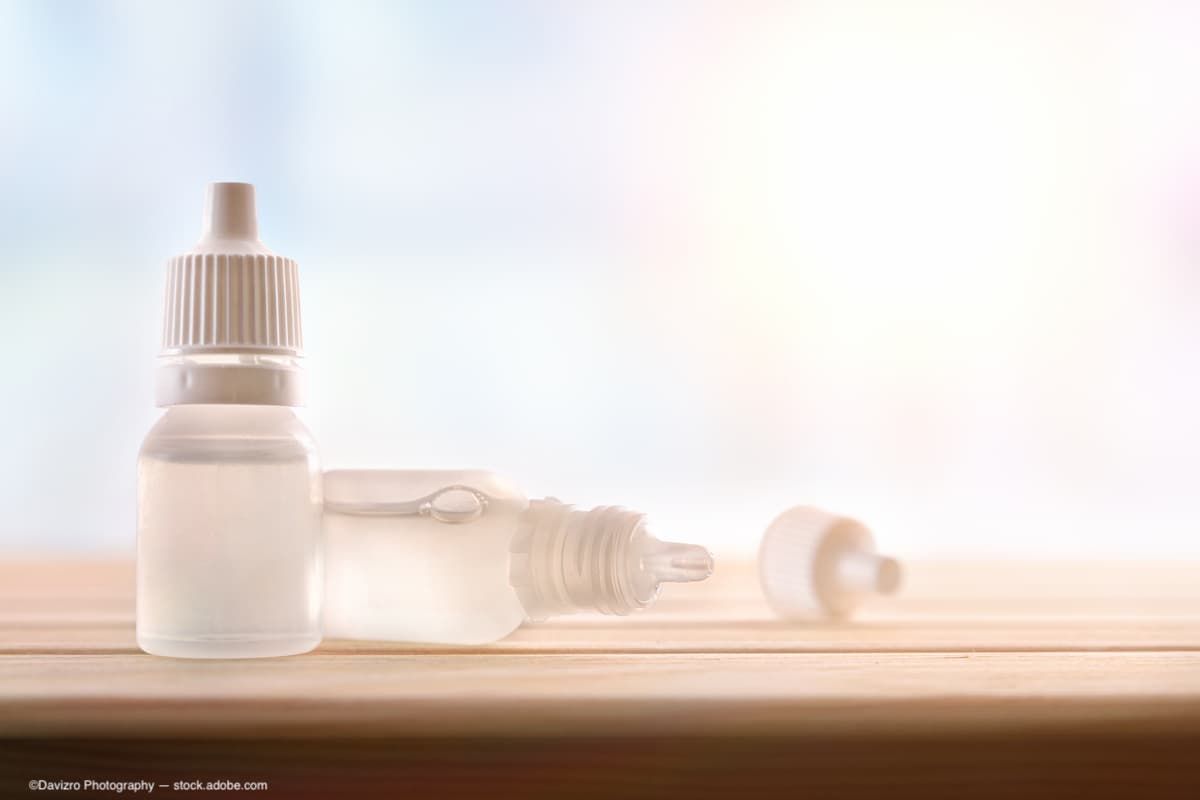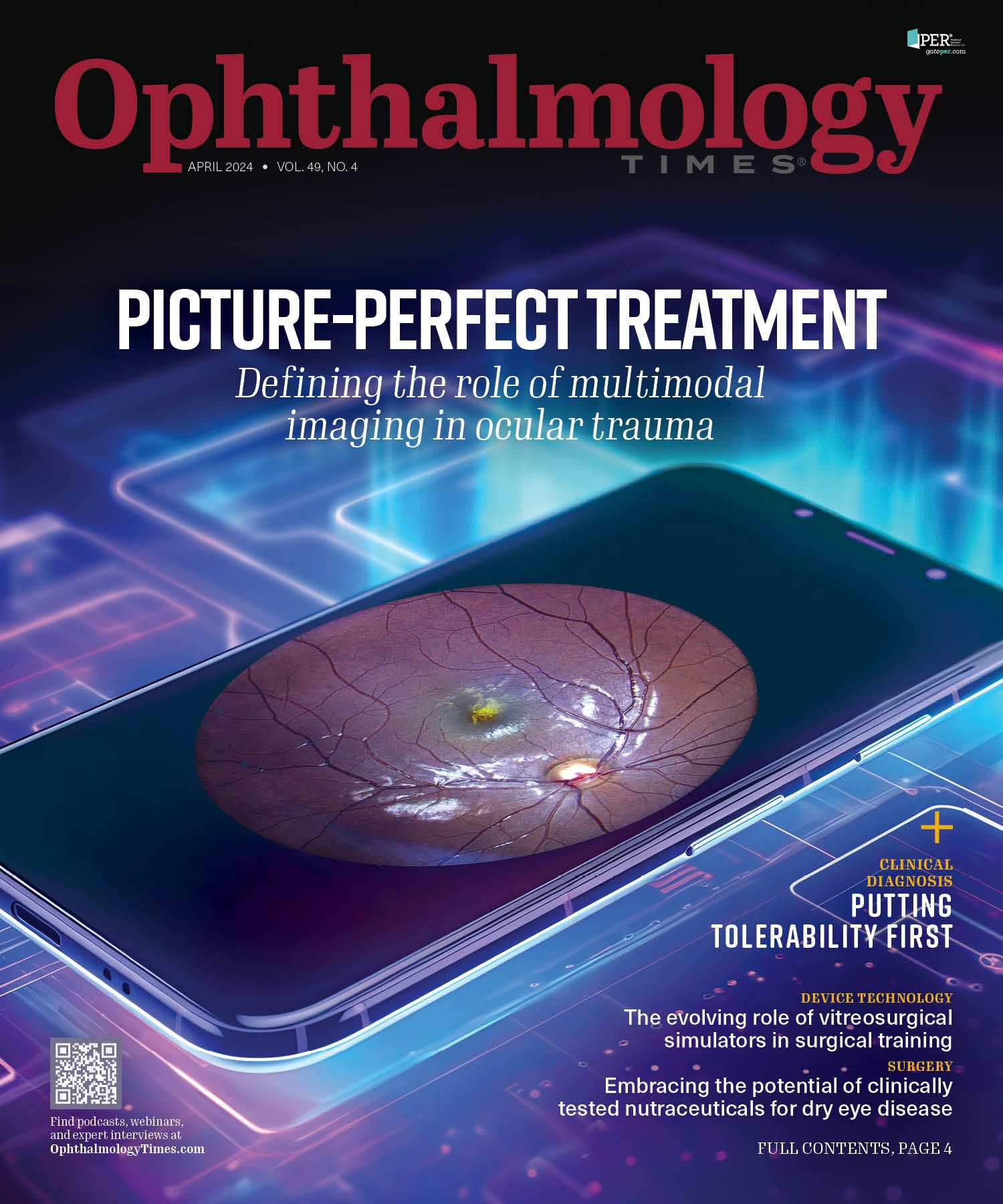Publication
Article
Digital Edition
Efficacy, safety of switching to latanoprostene bunod 0.024% in patients with OAG and OHT
Author(s):
The switch may produce an additional 25% IOP reduction in mild to moderate forms of disease
(Image Credit: AdobeStock/Davizro Photography)

Reviewed by Constance O. Okeke, MD, MSCE
Latanoprostene bunod 0.024% (LBN) (Vyzulta, Bausch & Lomb), a prostaglandin analogue (PGA), received FDA approval in 2017 based on data obtained in 2 prospective randomized clinical trials of 840 patients with open-angle glaucoma (OAG) or ocular hypertension (OHT).
First author Constance Okeke, MD, MSCE, and colleagues took those results a step further and evaluated the performance of LBN in a real-world clinical setting,1 which can differ substantially from that in randomized clinical trials.
Okeke is a glaucoma specialist at Virginia Eye Consultants and assistant professor of ophthalmology at Eastern Virginia Medical School, Norfolk.
All of the patients in this retrospective, noninterventional, multicenter chart review had mild to moderate OAG or OHT and were switched to LBN, at which time they were taking 1 or 2 IOP-lowering drugs. The main study outcome was the change in IOP from the index visit to each of the next 2 follow-up visits. The investigators analyzed the overall data and 2 patient subgroups: those previously on a PGA with or without another IOP-lowering product (PGA-all) and those previously on a PGA alone (PGA-monotherapy), Okeke explained.
The overall data from 49 patients were analyzed; the PGA-all subgroup was composed of 41 patients and the PGA-monotherapy subgroup 32 patients. The primary end point, the change in IOP, showed that there was roughly a 25% IOP decrease from the baseline visit to visit 1 and that decrease was sustained out to visit 2. The IOP decreases in the subgroups were similar to those found in the overall data, Okeke noted.
The study concluded that the short-term results of LBN to treat mild to modern OAG and OHT was safe and efficacious.
Moreover, Okeke explained this short-term retrospective study provides physicians with a window into sustainability, including the interval between 2 study visits. She also advised that future studies are needed to assess the drug’s effect over longer periods.
Okeke also noted the long-term clinical trials, APOLLO (NCT01749904), LUNAR (NCT01749930), and JUPITER (NCT01895972),2-4 showed the consistent IOP-lowering ability of LBN, with rates of IOP reduction maintained up to 1 year.
“When these observations are combined with the short-term results, there is confidence regarding use in real-world clinical practice to determine how it works in a glaucoma population,” she said. “These data may help inform clinicians on the potential effectiveness of LBN when switching patients with mild to moderate OAG/OHT from a previously administered PGA to LBN.”
LBN: Dual mechanism of action
Okeke said she considers LBN to be an extremely versatile treatment with a dual mechanism of action, which differs from other members of this drug class. PGAs affect the uveal-scleral pathway; in contrast, LBN, which is 1 molecule with 2 moieties, also affects the uveoscleral pathway by increasing outflow, and it exerts another unique action of nitric oxide that increases outflow through the trabecular meshwork, she explained.
“This activity in both pathways is what makes its ability to lower IOP really robust,” she commented. “Because of this, LBN can be considered as a treatment for all degrees of glaucoma, not just advanced disease.”
The beauty of the drug’s ability to work so well lies in the response of the trabecular meshwork. This pathway, with disease progression, becomes stiffer and less modifiable. “There is a strong therapeutic impact when the trabecular meshwork can be made to respond to therapy because of the nitric oxide component, which is why I believe that LBN has a very important role in the early stages of glaucoma,” she explained.
In her practice, Okeke said she has used LBN as a first-line agent since it became commercially available.
In addition to patients with established diagnoses of glaucoma, she also prescribes it for treatment-naive eyes.5
“The patients did very well in that retrospective study,” she pointed out. “There was an IOP reduction of about 31% IOP, but the decrease was even more powerful in patients with elevated IOPs above 21 mm Hg, with a mean reduction of 41% from baseline.”
Okeke also mentioned that LBN seems to work better in early-stage glaucoma than in severe disease.
“This performance in early-stage disease plays into the drug’s mechanism of action,” she concluded. “That is, the nitric oxide component is, I believe, what causes the majority of the IOP-lowering ability. Other PGAs don’t have this strong mechanism of action that works on the trabecular meshwork.”
Constance O. Okeke, MD, MSCE
E: cokeke@cvphealth.com
Okeke is with Virginia Eye Consultants and assistant professor of ophthalmology, Eastern Virginia Medical School, Norfolk, Virginia. She is a consultant to Bausch & Lomb.
References:
Okeke CO, Cothran NL, Brinkley DA, Rahmatnejad K, Rodiño FJ, Deom JE. Latanoprostene bunod 0.024% in patients with open-angle glaucoma switched from prior pharmacotherapy: a retrospective chart review. Clin Ophthalmol. 2024;18:409-422. doi:10.2147/OPTH.S442940
Hoy SM. Latanoprostene bunod ophthalmic solution 0.024%: a review in open-angle glaucoma and ocular hypertension. Drugs. 2018;78(7):773-780. doi:10.1007/s40265-018-0914-6
Weinreb RN, Liebmann JM, Martin KR, Kaufman PL, Vittitow JL. Latanoprostene bunod 0.024% in subjects with open-angle glaucoma or ocular hypertension: pooled phase 3 study findings. J Glaucoma. 2018;27(1):7-15. doi:10.1097/IJG.0000000000000831
Kawase K, Vittitow JL, Weinreb RN, Araie M; JUPITER Study Group. Long-term safety and efficacy of latanoprostene bunod 0.024% in Japanese subjects with open-angle glaucoma or ocular hypertension: the JUPITER study. Adv Ther. 2016;33(9):1612-1627. doi:10.1007/s12325-016-0385-7
Okeke CO, Burstein ES, Trubnik V, et al. Retrospective chart review on real-world use of latanoprostene bunod 0.024% in treatment-naïve patients with open-angle glaucoma. Ophthalmol Ther. 2020;9(4):1041-1053. doi:10.1007/s40123-020-00307-0

Newsletter
Don’t miss out—get Ophthalmology Times updates on the latest clinical advancements and expert interviews, straight to your inbox.




